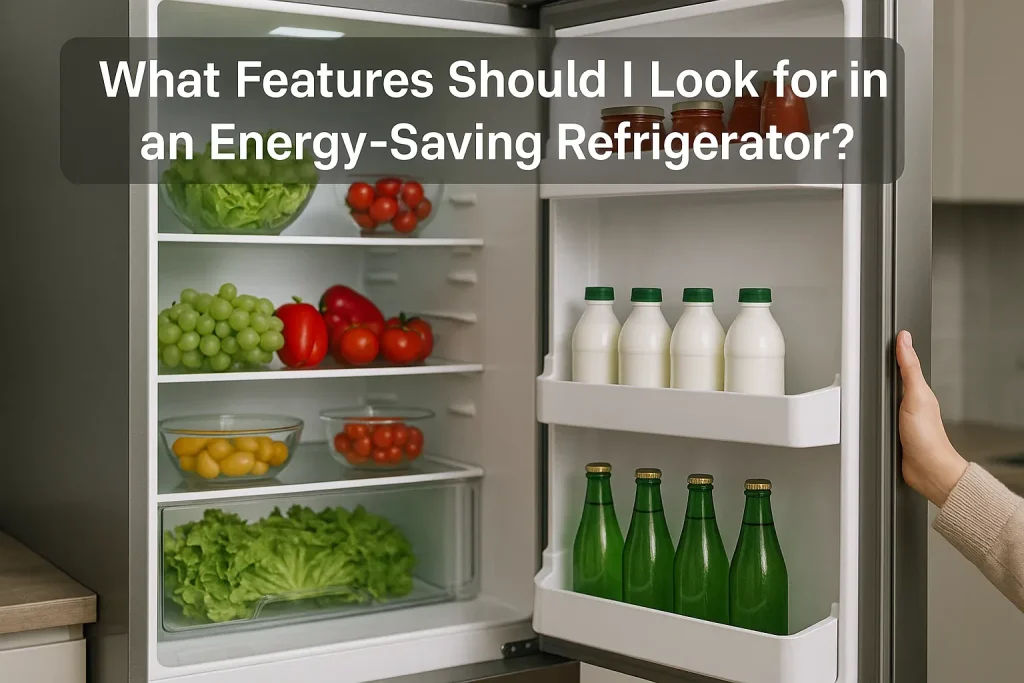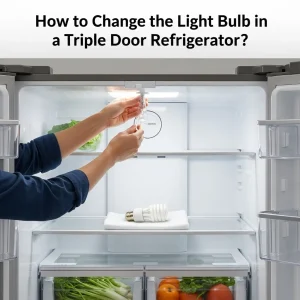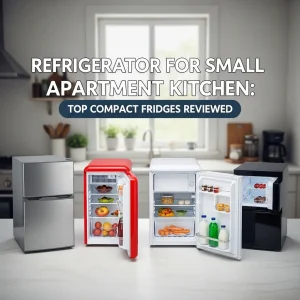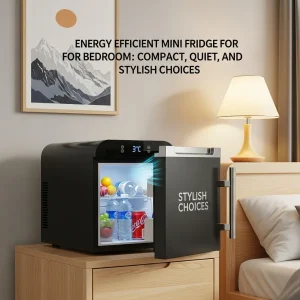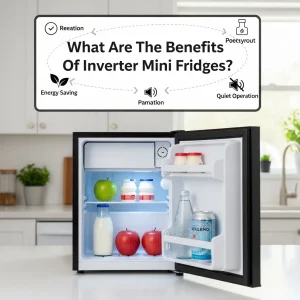Look for ENERGY STAR certification, adjustable temperature zones, and inverter compressors for maximum efficiency—plus smart features like vacation mode to save even more on bills!
Buying a new refrigerator is a big decision, especially if you want one that saves energy and lowers your electricity bill. With so many options available, it can be hard to know which features really make a difference.
If you’re asking, “What features should I look for in an energy-saving refrigerator?”—you’re in the right place! This guide covers everything you need to know, from energy ratings to smart cooling tech. Let’s break it down in simple terms.
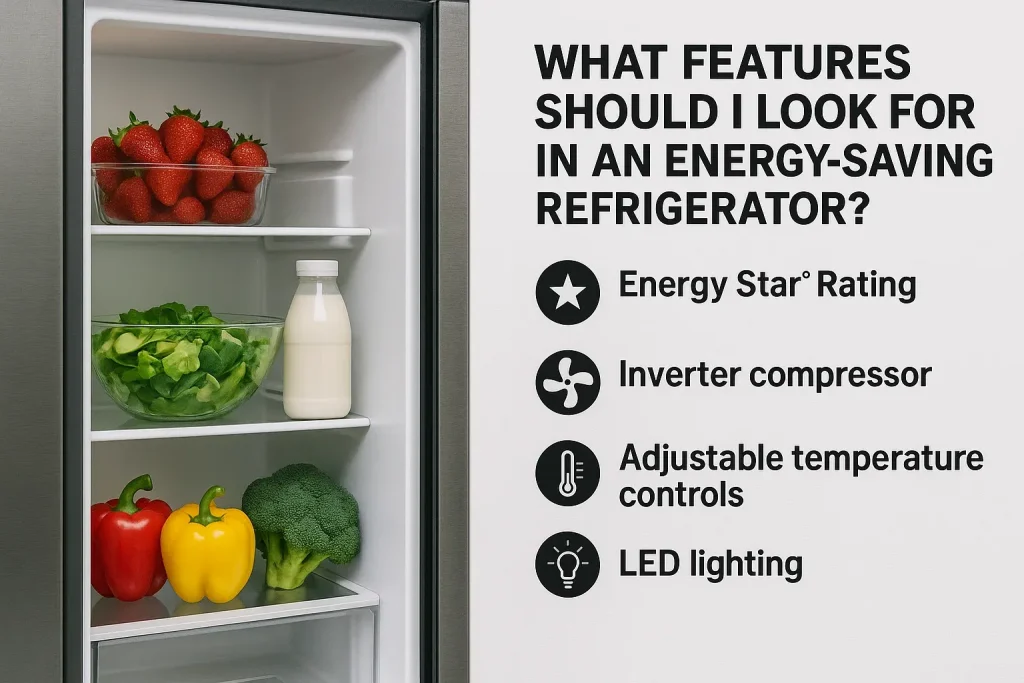
Why Choosing an Energy-Efficient Refrigerator Matters
Let me be honest—when I first shopped for a refrigerator, energy efficiency wasn’t even on my radar. But after one shockingly high electricity bill and some late-night research, I realized this was a non-negotiable factor.
Energy-efficient refrigerators not only cut down on your utility bills but also reduce your environmental footprint. According to the U.S. Department of Energy, an ENERGY STAR® certified refrigerator can save you over $300 in energy costs over its lifetime.
“Energy-efficient appliances aren’t just about savings; they represent a commitment to a sustainable lifestyle.” — Dr. Elisa D’Amico, Energy Expert
My Personal Journey Toward an Energy-Saving Appliance
At first, I assumed all modern fridges were efficient—but I was wrong. I started comparing energy guide labels and quickly discovered massive differences between models. It was eye-opening.
I made a spreadsheet, listing annual energy consumption (in kWh), price, and features. Surprisingly, the most expensive model wasn’t always the most efficient.
What I learned is: look for features, not just price tags.
Must-Have Energy-Saving Features to Consider
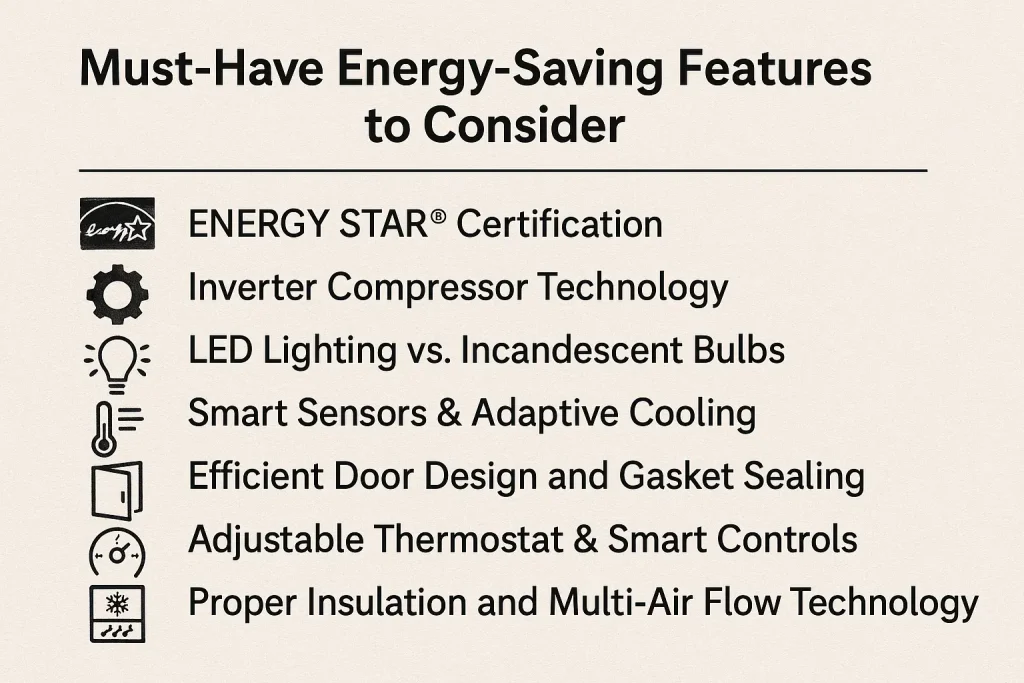
ENERGY STAR® Certification
This is the first thing I check. ENERGY STAR® certified appliances meet strict energy efficiency guidelines set by the EPA. It’s your guarantee that the refrigerator uses at least 15% less energy than standard models.
“ENERGY STAR is not a luxury—it’s a necessity in today’s energy-conscious world.” — Daniel Green, Appliance Consultant
Inverter Compressor Technology
Unlike traditional compressors that stop and start abruptly, inverter compressors run continuously and adjust their speed based on cooling needs. This leads to:
- Quieter operation
- Lower power usage
- Longer lifespan
LED Lighting vs. Incandescent Bulbs
LED lights use up to 80% less energy than incandescent ones and last longer too. Bonus? They don’t heat up your fridge, which means your compressor doesn’t have to work overtime.
Smart Sensors & Adaptive Cooling
I personally love this feature. Sensors adjust the internal temperature based on how often the door is opened or how full the fridge is. This keeps food fresher and avoids energy spikes.
Efficient Door Design and Gasket Sealing
Tightly sealed doors prevent cold air from escaping. French-door models often seal better and reduce the frequency of full-door openings—another energy saver.
Adjustable Thermostat & Smart Controls
Some fridges now let you control temperature settings from your smartphone, and even notify you if the door was left open. I use these features constantly!
Proper Insulation and Multi-Air Flow Technology
This keeps a consistent internal climate and minimizes the compressor’s workload. Look for models that have multi-directional airflow systems to evenly distribute cold air.
Size and Configuration: Bigger Isn’t Always Better
Buying the largest fridge on the market isn’t always the smartest choice. Oversized units can waste energy if you’re not using the space.
A smaller but well-organized fridge with adjustable shelves suited my family of four better than a bulky side-by-side.
“Choose the right capacity for your household; oversizing leads to inefficiency.” — Susan Kaplan, Home Energy Analyst
Material and Build Quality
Stainless steel not only looks sleek but tends to insulate better and is more durable. I also checked for models made from eco-friendly or recyclable materials.
Noise Levels and Compressor Efficiency
If the fridge is quiet, that usually signals efficient compressor function. Loud operation may indicate frequent start-stop cycles—an energy drainer.
Long-Term Cost Savings Analysis
Yes, energy-efficient models cost more upfront, but I calculated that I’d break even in less than three years due to energy savings alone. After that, it’s pure profit.
Comparing Top Brands for Energy Efficiency
I compared LG, Samsung, and Whirlpool—all had solid options, but I eventually chose a Samsung model with inverter tech, smart sensors, and a high-efficiency compressor.
Reading and Understanding the Energy Guide Label
The yellow Energy Guide label shows the estimated yearly electricity use (in kWh) and the approximate annual cost based on national averages. This is your best friend when comparing models.
Tips for Maximizing Refrigerator Efficiency at Home
- Keep it full (but not overloaded)
- Clean condenser coils every 6 months
- Don’t block vents
- Place it away from heat sources
These small habits help your appliance work smarter, not harder.
“A well-maintained energy-efficient fridge pays for itself in savings over time.” – John Smith, Appliance Technician
Final Thoughts: My Checklist Before Buying
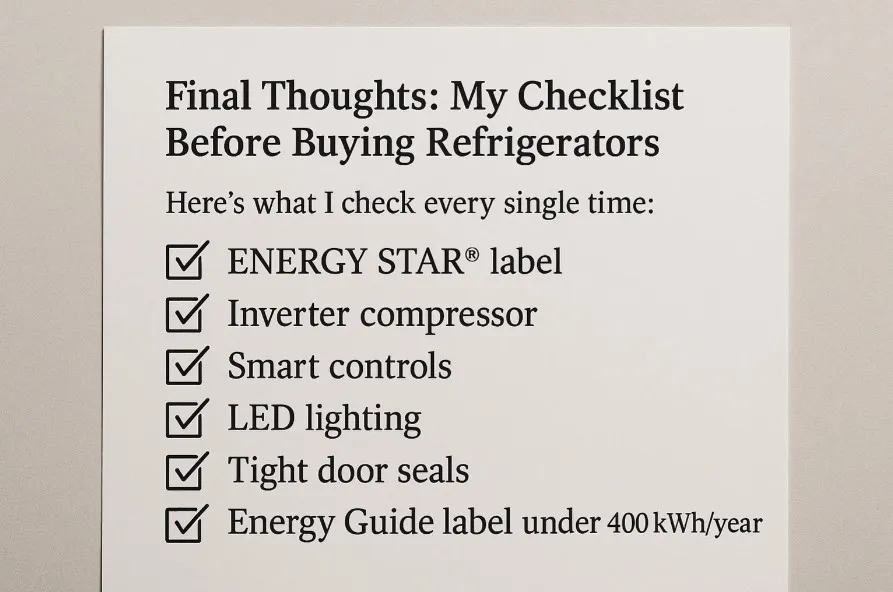
Here’s what I check every single time:
- ENERGY STAR® label
- Inverter compressor
- Smart controls
- LED lighting
- Tight door seals
- Energy Guide label under 400 kWh/year
These features give me peace of mind—and lower bills.
FAQs About Energy-Saving Refrigerators
Are inverter refrigerators really more energy-efficient?
Yes, they adjust cooling speed to demand, using significantly less electricity over time.
What’s the best fridge size for a small family?
Typically, 16-20 cubic feet is enough for a family of 2-4, depending on your cooking habits.
Is the ENERGY STAR® label always accurate?
Yes, it’s government-regulated and indicates verified energy efficiency performance.
Can I save energy with an older fridge if I maintain it well?
Somewhat, but older models lack modern technology. It’s often better to upgrade.
How much can I save annually with an efficient fridge?
Between $30–$60 or more depending on usage and local electricity rates.
Is stainless steel more energy-efficient than plastic?
Not directly, but it improves insulation and durability, which can enhance efficiency.
Conclusion
When asking, “What features should I look for in an energy-saving refrigerator?”, focus on ENERGY STAR ratings, inverter compressors, smart cooling, and proper insulation. These features help cut costs while being kinder to the planet.
Investing in an efficient fridge is a smart choice for your wallet and the environment. Take your time, compare models, and pick the one that fits your needs best.
“The best fridge isn’t just about storage—it’s about sustainability and savings.” – Emily Green, Sustainable Living Advocate

